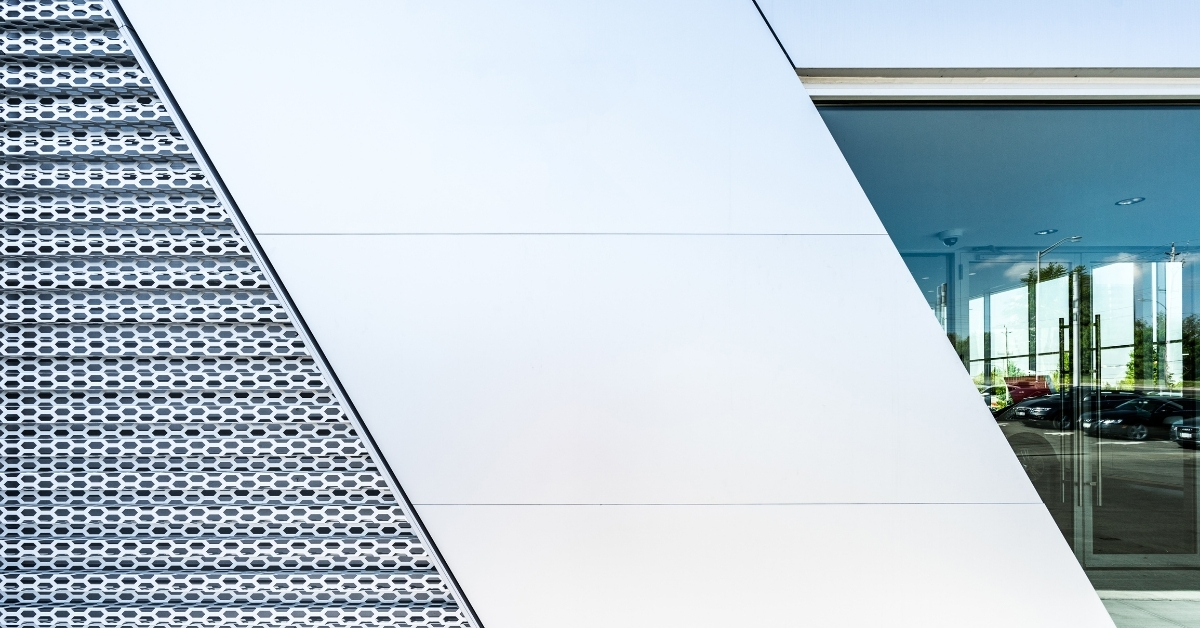Ventilated façades are a coveted solution in contemporary modern construction, as they constitute a response to energy efficiency and environmental sustainability criteria, precisely thanks to their structural characteristics.
In addition, from an aesthetic point of view, ventilated façades are an unquestionably visually pleasing addition, which improves the building’s design. In fact, external panels can be made of various materials: natural stone and granite, aluminium, glass, stoneware, marble, and terracotta. The choice of the material greatly depends on the designer, the technical requirements to be met, and the budget allocated for the construction.
The choice of a ventilated façade for a building fulfils the requirement to improve the overall thermal/energy performance of the structure, thus meeting multiple needs, such as, for example, a lower environmental impact.
The goal in choosing the solution of ventilated façades is precisely to add value to the building.
Today we will not discuss the functions and the structure of ventilated façades, on which you can learn more by reading our dedicated article “Ventilated façades: functions and benefits of the construction system”; instead, we will focus on the types we may encounter and their features.
Wooden ventilated façades
Wooden ventilated façades are usually considered for significant energy savings in the building we intend to design and build.
These ventilated systems made of wood are characterised by the use of wooden cladding, precisely in order to use a natural material, thus prioritising the sustainability that is a major goal of the sector.
Wooden façades are the natural solution par excellence in the construction sector. The wood-based material is treated specifically for installation on the outside of the building so that it will not be corroded by time and the weather.
Moreover, wood is a natural material that guarantees the building’s outstanding thermal insulation and soundproofing.
Façades made of wood, however, are not the ideal choice for all geographical areas; for example, they are not recommended as external cladding for buildings near the sea.
Although wooden ventilated façades are considered as a valid construction choice, they are not taken into consideration as frequently as terracotta and stone façades.
Terracotta ventilated façades
Terracotta ventilated façades are a particularly popular solution in North and Central Italy, as they fulfil the need for a waterproof external cladding that is protected from atmospheric events, such as frequent rain and strong winds that, usually, have a powerfully corrosive effect on buildings.
The continuity of external cladding made of terracotta, therefore, guarantees high levels of protection from these weather phenomena and, together with the gap, allows the insulating layer and the internal supporting wall to keep dry.
In addition, terracotta ventilated façades are one of the best solutions to guarantee buildings’ thermal insulation.
Stone ventilated façades
Stone ventilated façades are the most-often used solutions in the construction sector, in particular, because they guarantee hygienic and eco-sustainable buildings.
Stone ventilated façades are one of the three solutions mostly considered for optimum resistance of the material to time and the weather, the aesthetic benefit of stone for buildings, and durability over time.
Stone ventilated façades, unlike those made of terracotta or wood, are ideal for any type of building, as they are very aesthetically pleasing and have very high technical performances in terms of ventilation and insulation.
Other types of ventilated façades available on the market
Ventilated façades, in wood, stone, and terracotta are the most commonly chosen by designers and architects; however, they are only a few of many. Let us see what they are.
Aluminium ventilated façades
Aluminium for ventilated façades is a choice often taken into account in contemporary architecture, in particular, due to its ability to protect the building from weather phenomena.
The main features of aluminium are lightness, toughness, good plasticity and formability, all optimal attributes that make it ideal for all types of projects.
Stoneware ventilated façades
Choosing this material mainly depends on the designer’s goals, as it confers a particular style to the building. As is true for the other types of façade, this material also guarantees excellent thermal insulation and soundproofing. In addition, stoneware ventilated façades feature excellent physical and chemical resistance.
It is a waterproof material that can undergo various types of processing, which allows it to meet multiple aesthetic criteria.
Clay ventilated façades
Clay ventilated façades are an alternative that is often considered in contemporary architecture. The formats of this type of ventilated façade vary enormously, which makes them a perfect response for all design requirements.
Polycarbonate ventilated façades
In contemporary architecture, this type of façade is very common and sought-after. The most important aspects are the high flexibility of formats and their aesthetic features. Moreover, this material is very water-resistant.


